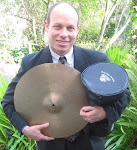The American people can assess the political merits of Obama's proposed $9 minimum wage easily enough--the rights of employers (liberty) versus societal responsibilities to the workforce (equity). Obama does not trust business, big or small, and believes that government must intervene to protect workers. One will agree or disagree with the president depending on ones political leanings. Liberals and a few moderates will support raising the minimum wage, but most citizens, conservatives and the majority of moderates, will not.
Evaluating the minimum wage controversy from an economic perspective is even more clear. The diagram (left) of a minimum wage, a type of price floor, shows that without government intervention, level Qf workers are employed. After the government mandates a price floor above the free market equilibrium point, a minimum wage, the amount of workers employed drops to Qd. In other words, according to economic theory, the minimum wage increases unemployment. How much? The unemployment (the surplus) is the difference between Qs and Qd. (The supply line is the supply of available workers at different price levels and the demand line is the demand that employers have for those workers at different price levels.)
The higher wage brings out a greater supply of workers. In this case, more teenagers will flood the job market, looking for that $9/hour instead of going to summer camp or on a trip. However, the demand for these workers falls because much entry level labor is not worth $9. Thus there is a surplus of workers and greater unemployment than before.
That is the theory. Cal professor David Card, interviewed in the UC Berkeley alumni magazine disagrees, but only partially. Here is part of the interview:
On the other hand, tying increases of the minimum wage to inflation, a "never-ending escalator" of cost increases for business, has disasterous potential. See the study here.
Will the minimum wage help the few workers that get entry level jobs? Yes, but not much. A full time worker making $9 an hour earns $18,000 per year, well below the poverty line. Nations do not become wealthy by enacting price floors. Instead, countries enrich their citizens by increasing productivity. The best way to do that is to better American education and increase research and development.
Evaluating the minimum wage controversy from an economic perspective is even more clear. The diagram (left) of a minimum wage, a type of price floor, shows that without government intervention, level Qf workers are employed. After the government mandates a price floor above the free market equilibrium point, a minimum wage, the amount of workers employed drops to Qd. In other words, according to economic theory, the minimum wage increases unemployment. How much? The unemployment (the surplus) is the difference between Qs and Qd. (The supply line is the supply of available workers at different price levels and the demand line is the demand that employers have for those workers at different price levels.)
The higher wage brings out a greater supply of workers. In this case, more teenagers will flood the job market, looking for that $9/hour instead of going to summer camp or on a trip. However, the demand for these workers falls because much entry level labor is not worth $9. Thus there is a surplus of workers and greater unemployment than before.
That is the theory. Cal professor David Card, interviewed in the UC Berkeley alumni magazine disagrees, but only partially. Here is part of the interview:
In 1994 you published a study with Alan Krueger that found that raising the minimum wage would not create higher unemployment. Given the more recent economy and the growing number of fast food and retail workers demanding a $15 per hour wage, do you believe your findings from 20 years ago still apply?
David Card: Currently the federal minimum wage is $7.25. So a rise to $15 would be more than a 100 percent increase in the minimum. Our New Jersey-Pennsylvania study focused on a 19 percent rise in the minimum wage (from $4.25 to $5.05). I don’t think one can extrapolate from a 19 percent rise to a 107 percent rise. In fact, faced with a $15 minimum wage, I suspect that employers in many low-wage areas of the country would simply refuse to comply. Realistically there is not much chance of more than a 25 or 30 percent rise in the minimum. For that range of increase I think our results would still be relevant. In fact, a number of studies since our work have confirmed our finding that the employment losses associated with a modest rise in the minimum wage are barely detectable.
On the other hand, tying increases of the minimum wage to inflation, a "never-ending escalator" of cost increases for business, has disasterous potential. See the study here.
Will the minimum wage help the few workers that get entry level jobs? Yes, but not much. A full time worker making $9 an hour earns $18,000 per year, well below the poverty line. Nations do not become wealthy by enacting price floors. Instead, countries enrich their citizens by increasing productivity. The best way to do that is to better American education and increase research and development.




